Hydrangeas are a favorite among gardeners for good reason — their lush blooms, variety of shapes, and vibrant colors bring elegance and personality to any landscape. Whether you’re working with a shady backyard, a sunny border, or even a vertical space, there’s a type of hydrangea that fits beautifully. With six main types to choose from, each with its own unique characteristics and care requirements, hydrangeas offer both beauty and versatility throughout the seasons.
In this guide, we’ll walk through the six most popular kinds of hydrangeas for landscaping, highlighting their features, growing tips, and how they can enhance different garden styles — helping you choose the best match for your space and climate.
Table of Contents
Table of Contents
1. Bigleaf Hydrangeas (Hydrangea macrophylla)
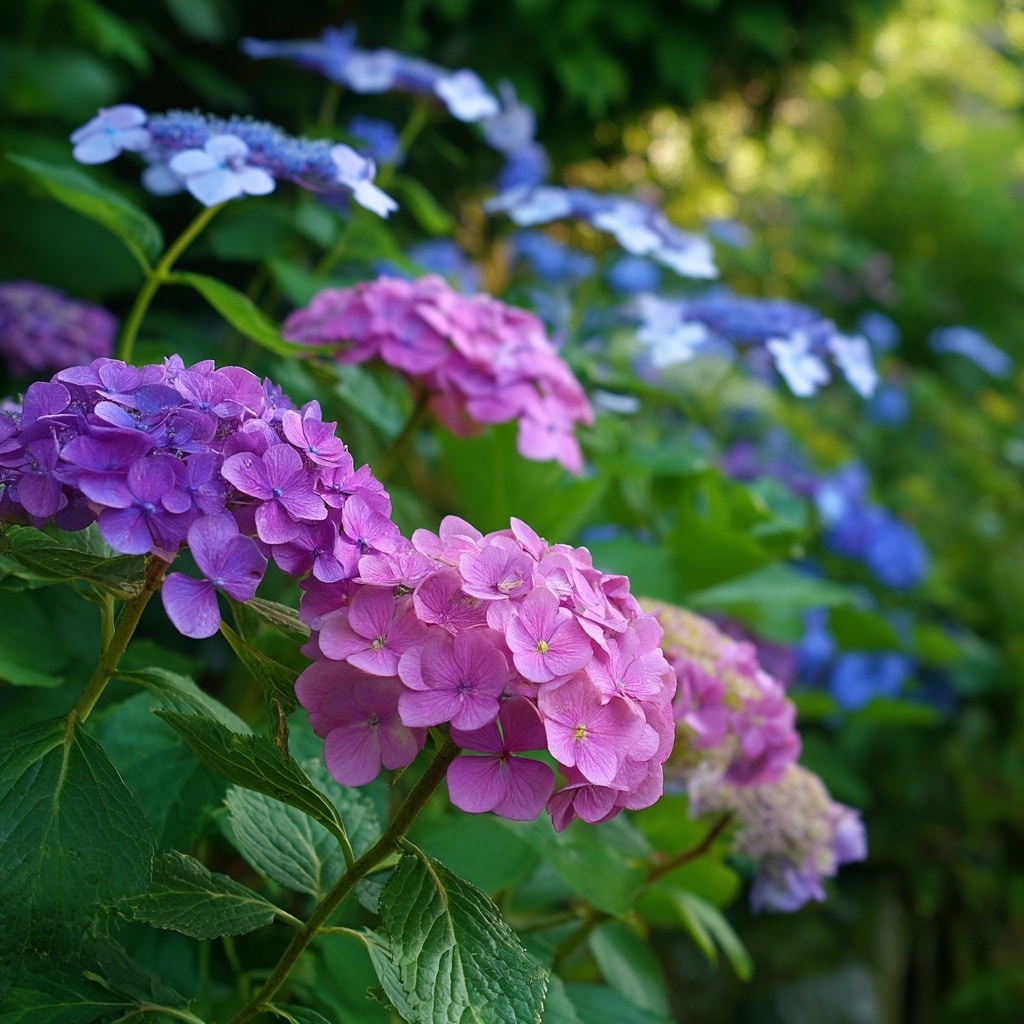
Bigleaf hydrangeas are among the most recognizable and widely grown varieties, thanks to their bold, colorful blooms and lush foliage. Native to Japan, they’re often the first type gardeners fall in love with. Bigleaf hydrangeas thrive in well-drained, fertile soil and can bloom in shades of blue, pink, or even purple — all influenced by your soil’s pH.
There are two main types of bigleaf hydrangeas: mophead and lacecap.
Mophead Hydrangeas
Mophead hydrangeas are known for their large, rounded flower clusters that look like pom-poms. Their bloom color can shift based on soil chemistry: acidic soil produces blue flowers, while alkaline soil yields pink.
- USDA Zones: 5–9
- Bloom Time: Early summer to fall
- Soil: Rich, well-draining; adjust pH for desired bloom color
- Sunlight: Partial shade to full sun (afternoon shade in hot climates)
- Growing Tips: Water consistently, especially in dry periods. Prune immediately after flowering to avoid cutting off next season’s buds. Add mulch to maintain soil moisture.
- Landscaping Ideas: Mopheads create dramatic focal points in borders and look stunning in cut arrangements.
Lacecap Hydrangeas
Lacecaps are more delicate, with flat flower heads that feature a ring of showy sterile flowers around a center of tiny fertile buds. They’re ideal for gardeners seeking a slightly subtler bloom with interesting texture.
- USDA Zones: 5–9
- Bloom Time: Early summer to fall
- Soil: Same as mopheads — well-drained and pH-sensitive
- Sunlight: Partial shade to full sun
- Growing Tips: Like mopheads, lacecaps should be pruned after blooming. Keep soil moist but not soggy.
- Landscaping Ideas: Perfect for mixed garden beds and adding soft color contrast among textured foliage.
2. Mountain Hydrangeas (Hydrangea serrata)
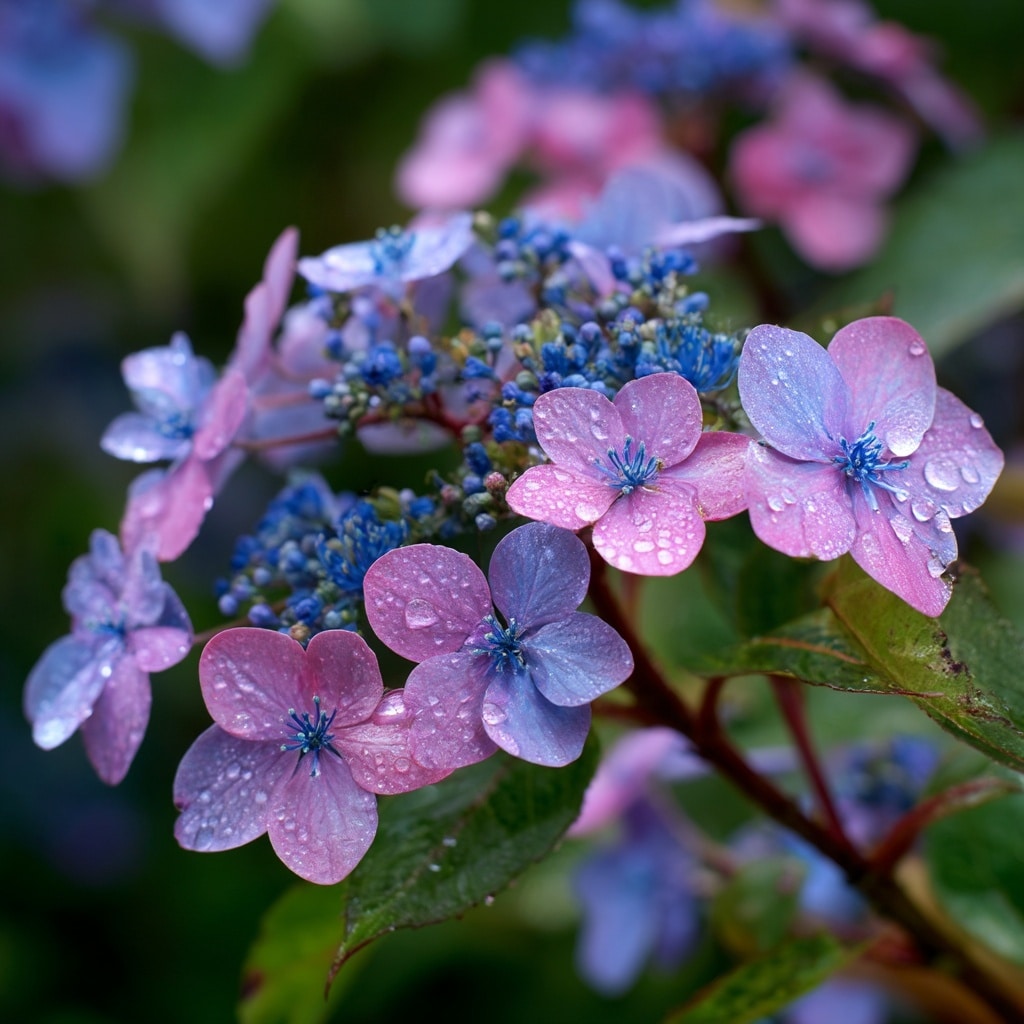
Mountain hydrangeas are a close cousin to the bigleaf variety, but they’re more compact and better suited to colder climates. Native to the mountainous regions of Korea and Japan, they produce smaller, delicate blooms that resemble lacecap hydrangeas. These shrubs are ideal for gardeners who want the beauty of hydrangeas with added hardiness and a lower maintenance profile.
Mountain hydrangeas also respond to soil pH, offering blooms that range from vivid pink to sky blue, depending on the conditions.
- USDA Zones: 4–8
- Bloom Time: Early summer to fall
- Soil: Moist, well-drained, and fertile; acidic soil for blue flowers, alkaline for pink
- Sunlight: Partial shade is best, though they can handle some morning sun
- Growing Tips: These plants are naturally compact, making them easy to manage. Water regularly, and prune lightly after flowering to maintain shape and encourage new growth.
- Landscaping Ideas: Perfect for small gardens, edging along pathways, or growing in containers on patios and balconies. They’re also great in woodland settings where filtered light prevails.
3. Panicle Hydrangeas (Hydrangea paniculata)
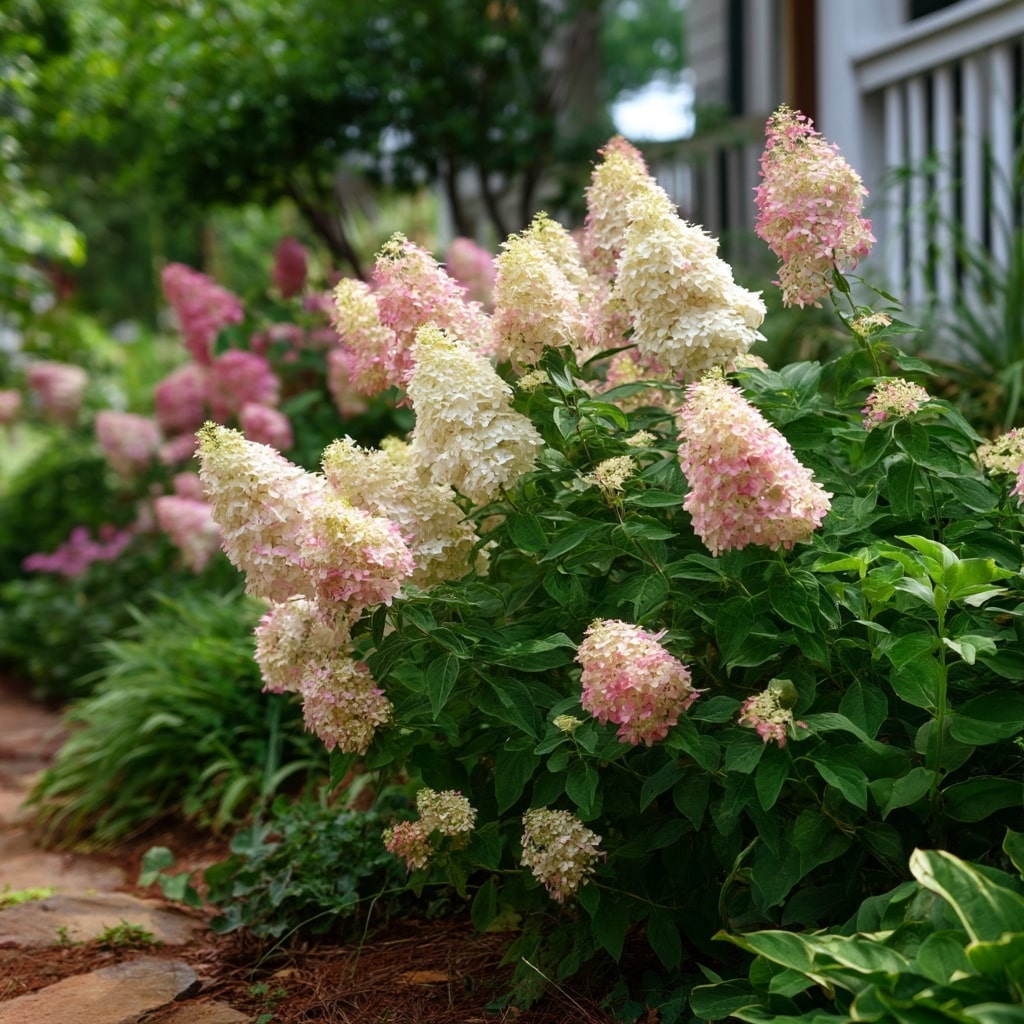
Panicle hydrangeas are among the most sun-tolerant and cold-hardy of all hydrangea varieties. Recognized by their large, cone-shaped flower clusters, these blooms can reach up to 18 inches long. They typically start white or pale green and gradually deepen to pink, rose, or even burgundy as the season progresses — offering extended visual interest from summer into fall.
Their upright growth and reliability make panicle hydrangeas a favorite choice for structured landscapes and larger garden designs.
- USDA Zones: 3–8
- Bloom Time: Mid-summer to fall
- Soil: Adaptable to most soils, but prefers well-drained and slightly acidic conditions
- Sunlight: Full sun to partial shade (thrives with 6+ hours of sun)
- Growing Tips: These are low-maintenance and respond well to pruning. For best flowering, cut back stems in late winter or early spring to encourage strong new growth.
- Landscaping Ideas: Excellent for borders, privacy hedges, or as a bold backdrop in large beds. The dried blooms also make beautiful additions to fall or winter décor.
4. Smooth Hydrangeas (Hydrangea arborescens)
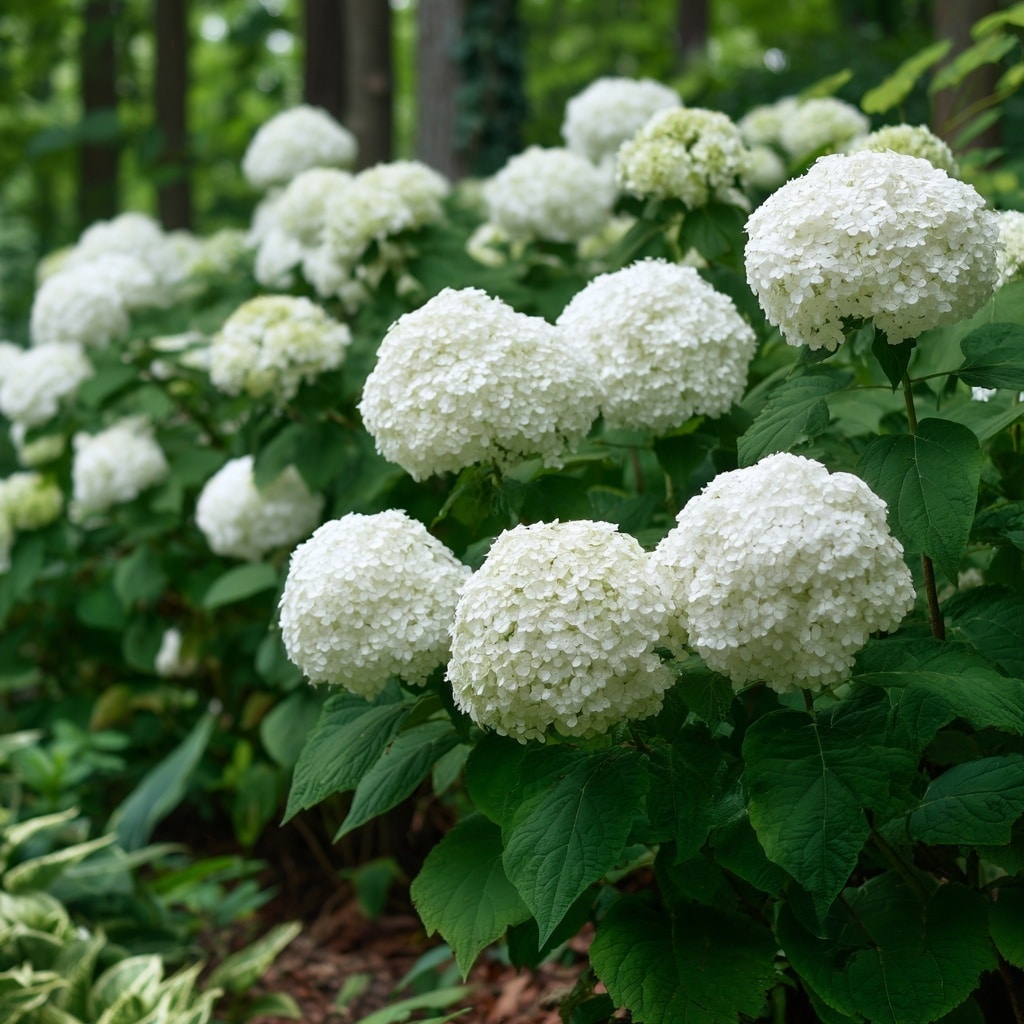
Smooth hydrangeas are a fantastic option for gardeners seeking a hardy, easy-care plant that delivers big visual impact. Native to the eastern United States, these hydrangeas are known for their large, rounded flower heads — often in crisp white or soft pink. One of the most popular cultivars is ‘Annabelle’, celebrated for its enormous, snowball-like blooms.
Smooth hydrangeas are incredibly resilient and can tolerate a range of soil types and conditions, making them a go-to for less formal gardens or naturalized areas.
- USDA Zones: 3–9
- Bloom Time: Late spring to fall
- Soil: Rich, well-drained soil preferred, but they adapt well to varying conditions
- Sunlight: Partial shade to full sun (give afternoon shade in hotter regions)
- Growing Tips: These plants bloom on new wood, so they can be pruned hard in late winter or early spring to control size and boost bloom production. Regular watering encourages the largest flowers.
- Landscaping Ideas: Ideal for shady spots, mass plantings, or natural borders. They also work well in foundation plantings and along woodland paths where other hydrangeas may struggle.
5. Oakleaf Hydrangeas (Hydrangea quercifolia)
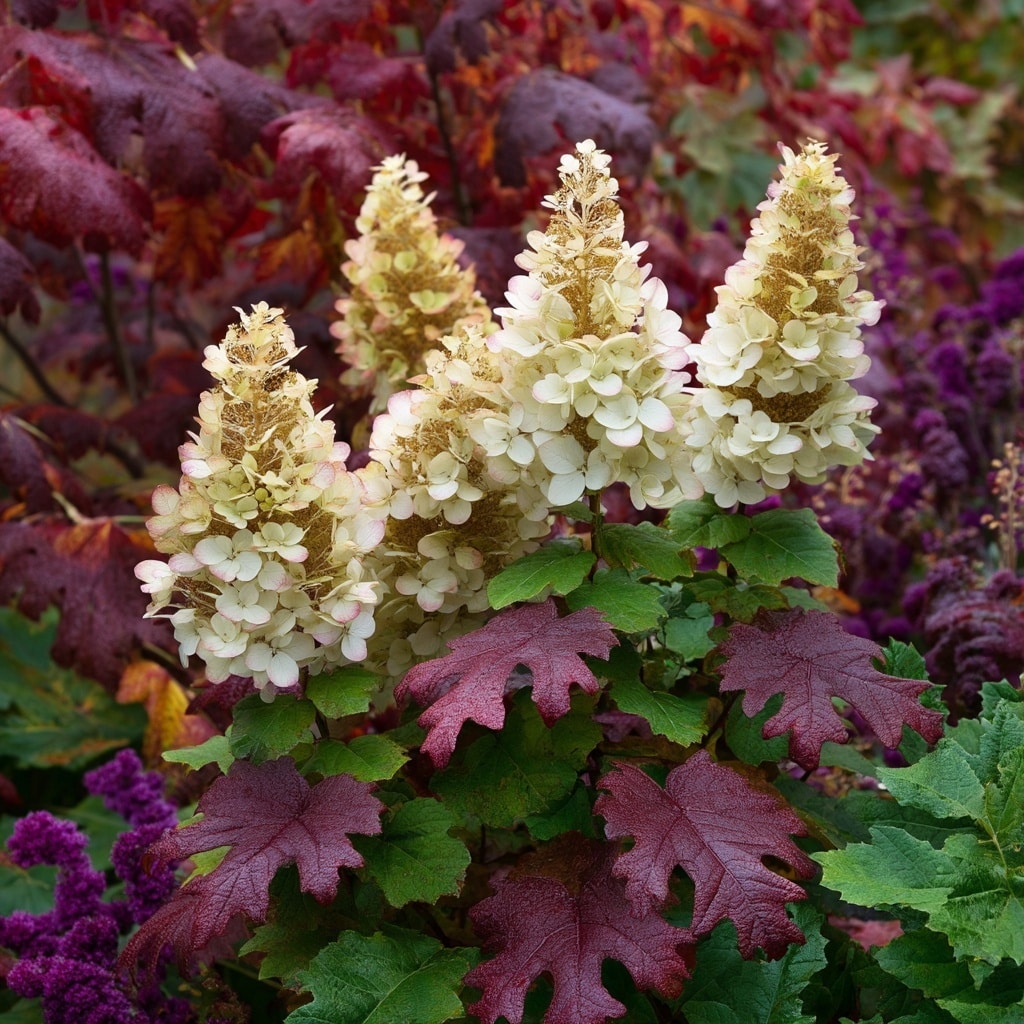
Oakleaf hydrangeas stand out from the crowd with their bold, deeply lobed foliage that resembles oak leaves — a striking feature that adds interest even when the plant isn’t in bloom. Their cone-shaped flower clusters open in creamy white and transition to soft pink or rose as they age. In autumn, the foliage turns brilliant shades of burgundy, red, or bronze, giving them a four-season appeal.
These hydrangeas are especially well-suited for naturalized gardens or woodland settings and are native to the southeastern United States.
- USDA Zones: 5–9
- Bloom Time: Early summer to fall
- Soil: Well-drained, slightly acidic soil
- Sunlight: Partial shade is ideal, but they can handle full sun in cooler climates
- Growing Tips: Oakleaf hydrangeas are drought-tolerant once established. Minimal pruning is needed — just remove dead wood or shape lightly after flowering. Mulch around the base to conserve moisture and protect roots in colder areas.
- Landscaping Ideas: Their dramatic foliage and blooms make them excellent for woodland borders, under tree canopies, or as a specimen shrub in naturalistic plantings.
6. Climbing Hydrangeas (Hydrangea anomala subsp. petiolaris)
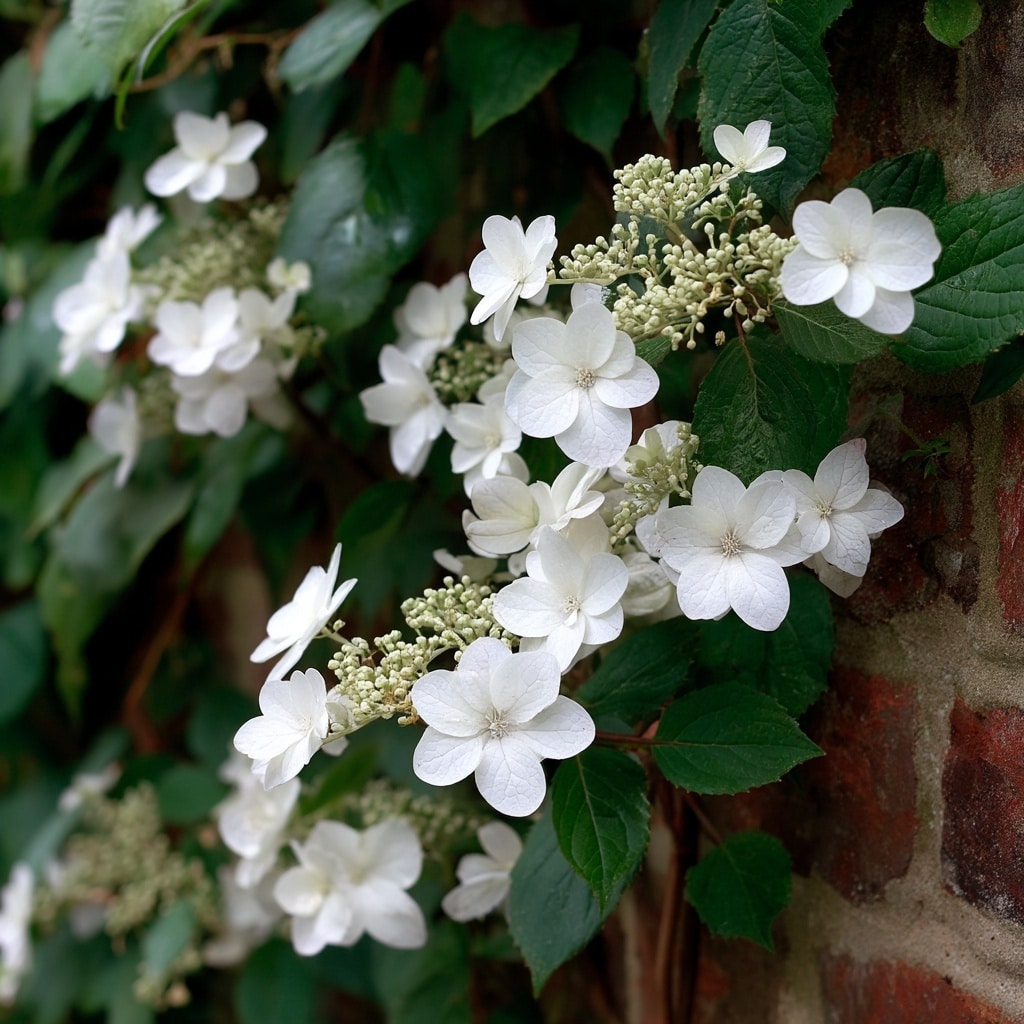
Climbing hydrangeas offer a completely different growth habit from the other types — these vigorous vines scale walls, fences, and trellises with ease, creating a stunning vertical display of blooms and foliage. Their white, lacecap-like flower clusters are lightly fragrant and appear in late spring to early summer, standing out beautifully against their dark green, heart-shaped leaves.
Though slow to establish in their first few years, climbing hydrangeas reward patience with years of low-maintenance beauty and structural charm.
- USDA Zones: 4–8
- Bloom Time: Late spring to early summer
- Soil: Moist, well-drained, and fertile soil is best
- Sunlight: Partial shade to full sun (prefers dappled light in warmer climates)
- Growing Tips: These plants need strong support — like a masonry wall, arbor, or pergola. Once mature, they’re self-clinging via aerial rootlets. Prune after flowering to control size and shape. Keep soil evenly moist during dry spells.
- Landscaping Ideas: Perfect for covering unsightly fences or bare walls, or to soften the look of stone or brick structures. They also work well cascading over retaining walls or climbing up large tree trunks.
Conclusion
Hydrangeas are more than just a garden favorite — they’re a diverse group of flowering shrubs and vines that offer something for every landscape style and skill level. From the bold mophead blooms of bigleaf hydrangeas to the delicate textures of lacecaps, the upright drama of panicles, and the climbing elegance of vine types, each variety brings unique beauty and seasonal interest.
By understanding the needs of each type — including sunlight, soil, and pruning preferences — you’ll be better equipped to keep your hydrangeas healthy and vibrant year after year. Whether you’re creating borders, brightening shady areas, or adding vertical charm to a wall or trellis, hydrangeas can be the showstoppers your garden deserves.
Consider pairing them with shade-loving perennials, ornamental grasses, or evergreens for a dynamic, all-season design.



